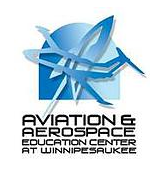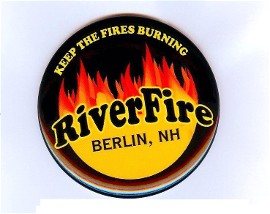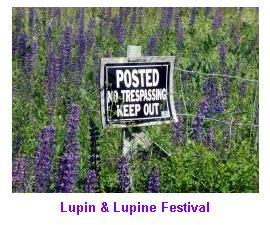Our kids in New Hampshire are behind a lot of others when it comes to science, technology, engineering, and math (STEM) education. In 2012, New Hampshire 8th graders scored below other New England states in both math and science. Moreover, New Hampshire ranks 21st and 32nd respectively in the percentage of STEM associate and bachelor degrees earned when compared to the other states in the country, according to a recent report compiled by a task force created by New Hampshire Governor Maggie Hassan.
This is critical when you consider the number of job opportunities expected. The Federal Aviation Administration (FAA) predicts that by 2030,

the aviation industry will need 460,000 new commercial pilots and 650,000 new commercial airline maintenance technicians alone. Some are calling this gap in STEM knowledge a 'pipeline leak.' The jobs are in the pipeline, but if this gap remains, we will not be qualified to fill them.
Bill Seed, a resident in the lake's region, realized something needed to be done. Inspired by
Dreams of Flight, an exhibit he visited, Bill gathered a group of like-minded friends interested in aviation to determine what small thing they could do to address the issue. That's when WinnAero, the dream for a non-profit aviation and aerospace education center in the Winnipesaukee area, was conceived.
The seeds that Bill planted soon began to flourish, cultivated by WinnAero board members Bill Moran Col (ret) USAF, Chief Flight Instructor with the Civil Air Patrol (CAP), and award winning aerospace technology educator, Daniel Caron, among others.
"We were looking for a way to expose kids to careers in the aviation industry and I was aware of a program through the Federal Aviation Administration (FAA) called Aviation Career Education (ACE) Academy," explained Caron, now the Director of Education Services for WinnAero and ACE Academy Director. The one week camp for grades 3-12, has increased the attendance from nine students in the first year to 57 last year and the excitement keeps growing.
So what's so exciting about ACE Academy?
Well, flying for one. "We work each day on aviation experiments," explains Caron. "With model planes students learn about movement in flight, drag, lift, thrust, different forces of flight. Then, when they actually get the yoke in their hands, they experience what they learned." Yes, that's correct. Each participant is taken up in a plane with a flight instructor and is handed the wheel.
Jon Panus, a 13 year old participant in WinnAero's ACE Academy describes his experience, "The flight instructor got us lifted off and then he let me take control of the plane. It was an amazing experience. It almost felt like driving, but in the air. It was cool."
Jon's mother Julie Sicks-Panus, a technology educator for over 21 years, is an instructor for ACE Academy. "There's no doubt in my mind that the most exciting thing about the week is flying the plane," confirms Julie. "We have 12 flight simulators to teach them to control the plane on the ground. Each station has a yoke, foot pedals, rudder pedals, etc. The software that is part of the simulator allows us to download local scenery, so it's as if they are flying over the lake."
Julie's also a parent. "It's important to expose kids to the industry. For every pilot, there are 23 support people behind them, such as air traffic controllers and mechanics. On career day we have a panel of people, both men and women, with aviation careers come to speak to the students. Bill Moran spoke about his experience with the Civil Air Patrol." After completing ACE Academy, some join CAP to continue their aviation education. Julie's son is one of them.
WinnAero is a successful program that can serve as a model in other parts of the state. The active airport in Whitefield is the perfect location for second program, WinnAero Northern Lights, slated to serve Coos County.
Moran shares his vision for the program in Whitefield, "The first initiative of WinnAero Northern Lights would be to provide 4 science teachers $500 grants to purchase high quality aerospace text books published by the Civil Air Patrol; covering STEM topics such as the science of flight, space and spacecraft, weather, and model rocketry. From there, the teachers may choose to participate in the ACE Teacher Professional Development program we offer to bring the curriculum to their schools." When teachers participate in the program, they receive a one year CAP aerospace education membership, six CAP STEM modules, and information about grants to assist in implementing the programs. http://www.winnaero.org/.
As recognized by the Governor's task force, "Public funding is essential to support strong and sustained core STEM programs." WinnAero is doing its part to bring STEM programs to NH kids, but it needs the help of the public. "If we had a donation of $2000, we could give the grants, have the teachers trained, and start an after school aerospace program for 6, 7, and 8th graders." Bill explains, as he appeals to area businesses.
How you can help.
If you'd like to help, send your tax deductable contribution to
WINNAERO, Northern Lights, 65 Aviation Drive, Gilford, NH 03249 or online at
http://www.winnaero.org/, select
More from the menu, then
Donations and please follow up your online donation with an email to Educational Director
Dan Caron via his email:
dwcaron@hotmail.com.
"The time to act, to organize efforts, to move forward on enhancing STEM K-12 education is now.
Too much is at stake. Other nations out-compete our nation in STEM education, other states are
expanding their efforts faster than New Hampshire, and the state's STEM workforce pipeline is
failing to keep pace with the needs of our employers. If this trend continues the state's
economy will not grow as strongly as it could, jobs will continue to go unfilled, and opportunities
will be lost for our young people and their communities," Governor's Task Force on K-12 STEM Education.
►
RELATED ARTICLE: NH Aviation Camp Dates Announced















 1
1 2
2 3
3 4
4 5
5 the aviation industry will need 460,000 new commercial pilots and 650,000 new commercial airline maintenance technicians alone. Some are calling this gap in STEM knowledge a 'pipeline leak.' The jobs are in the pipeline, but if this gap remains, we will not be qualified to fill them.
the aviation industry will need 460,000 new commercial pilots and 650,000 new commercial airline maintenance technicians alone. Some are calling this gap in STEM knowledge a 'pipeline leak.' The jobs are in the pipeline, but if this gap remains, we will not be qualified to fill them.





